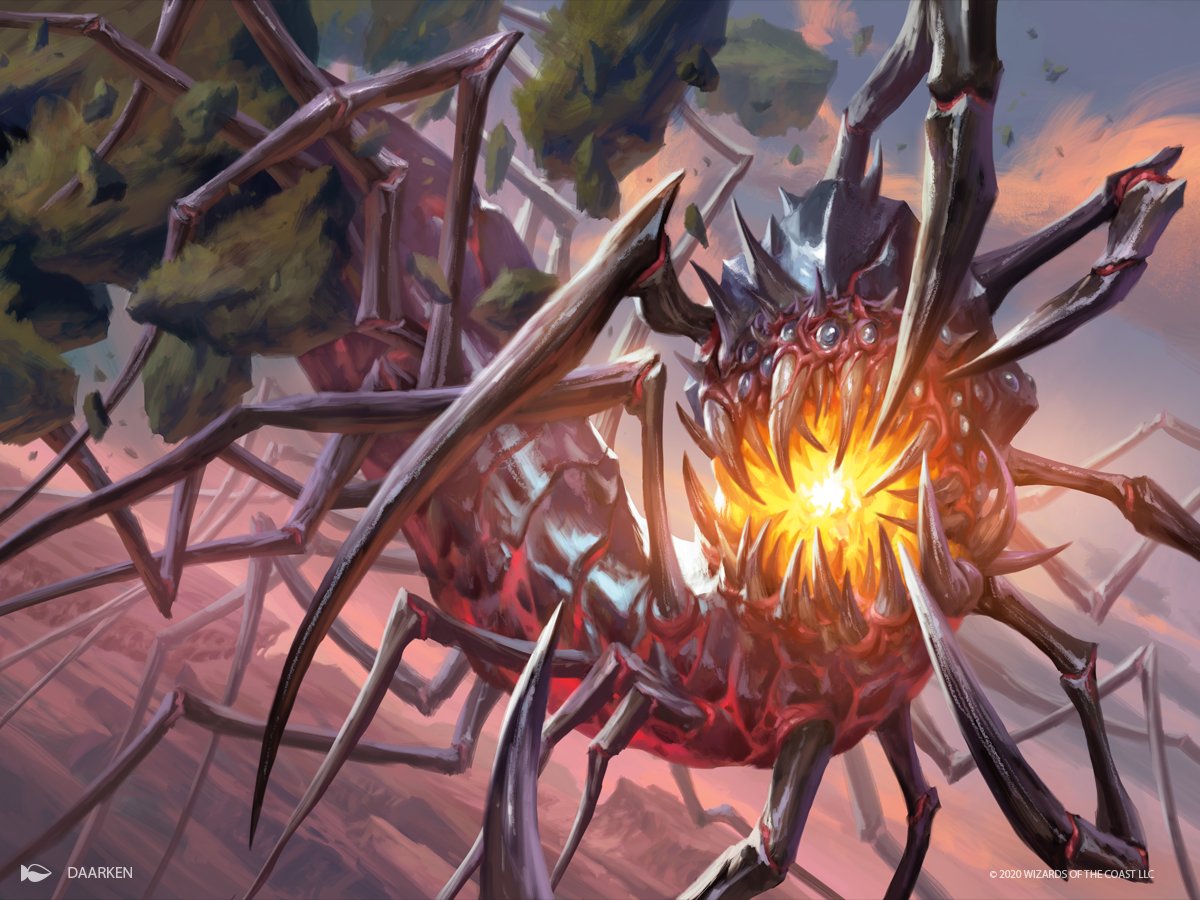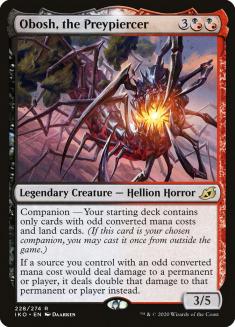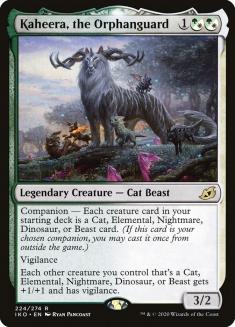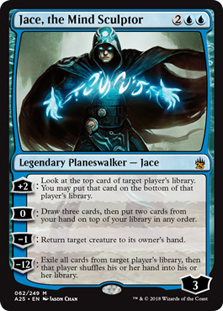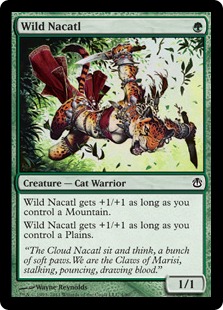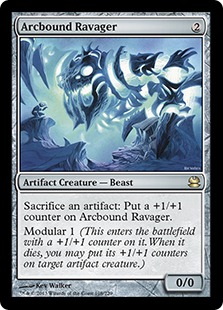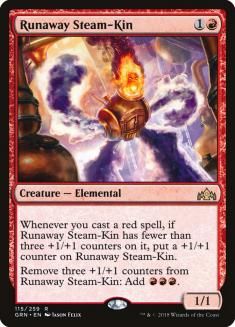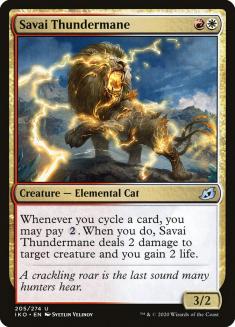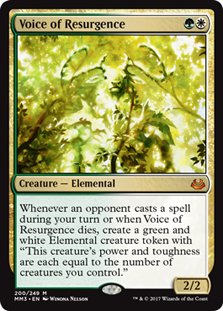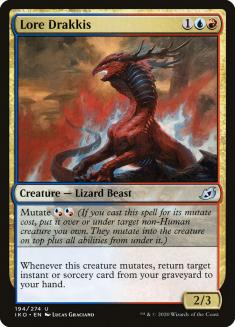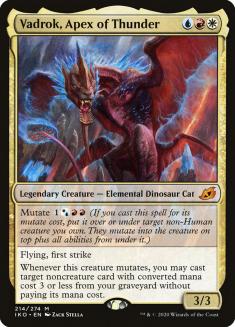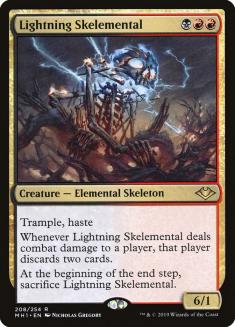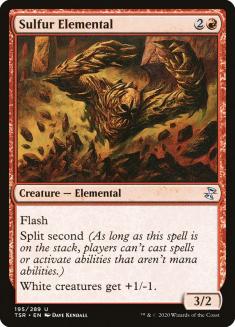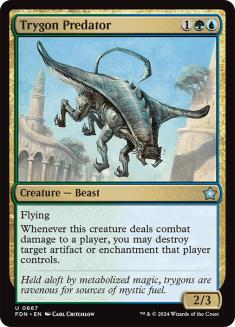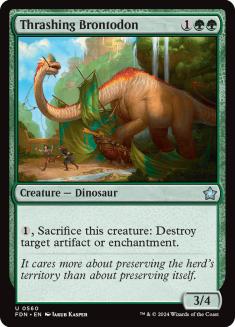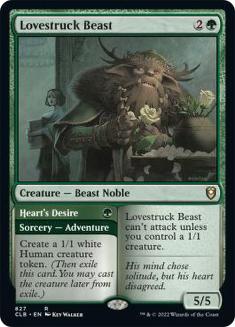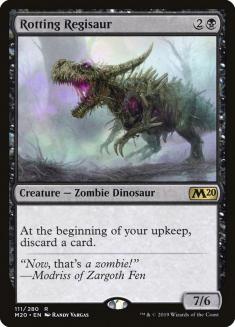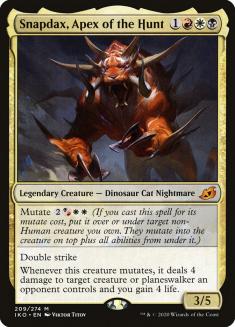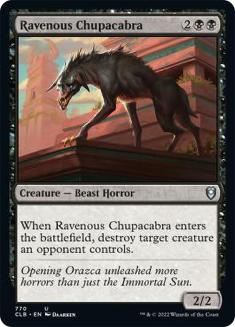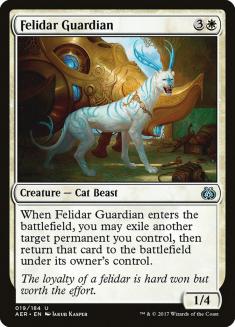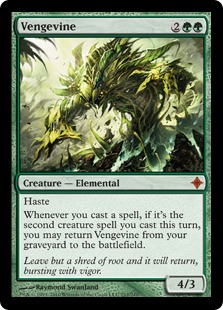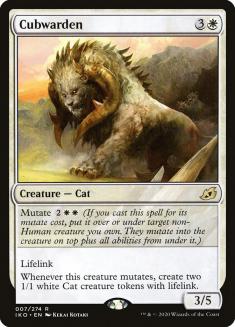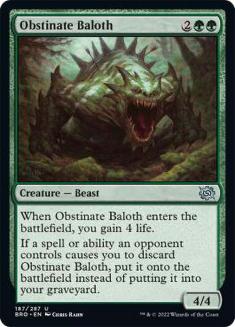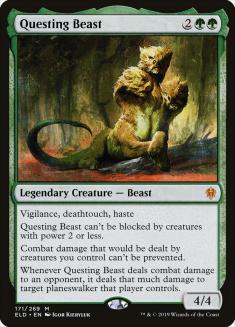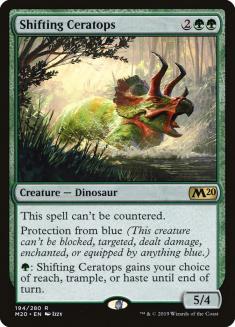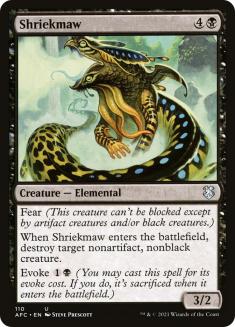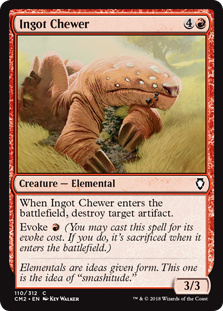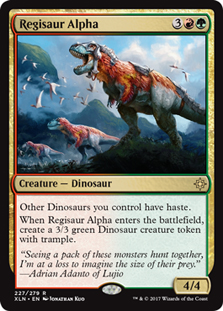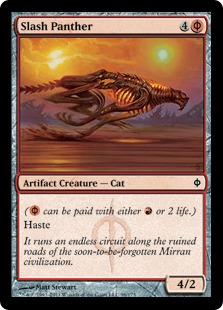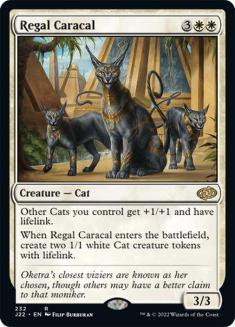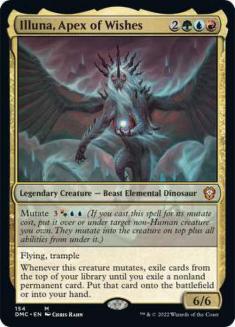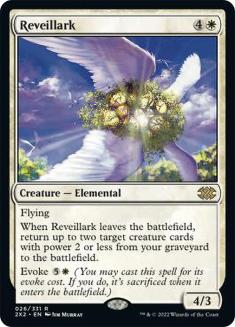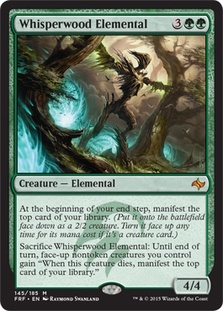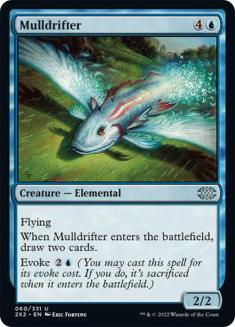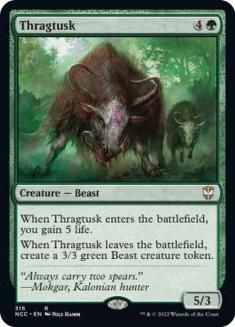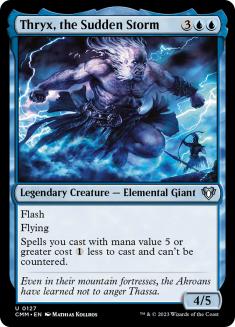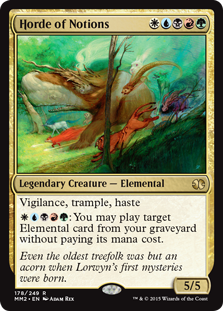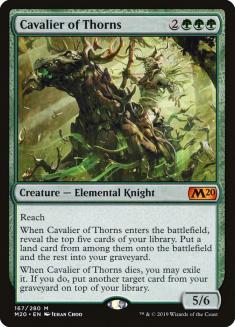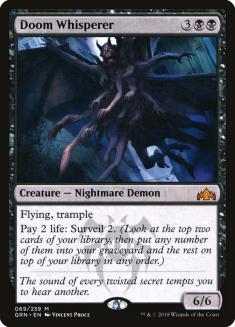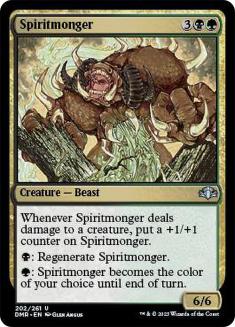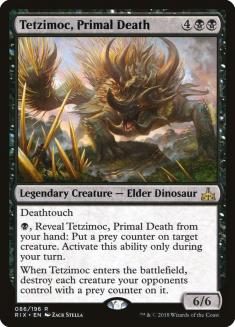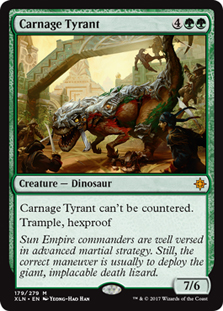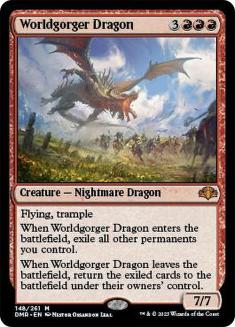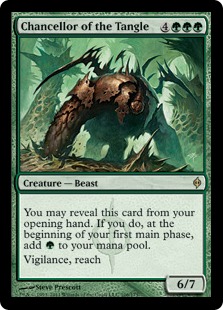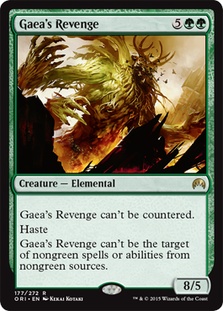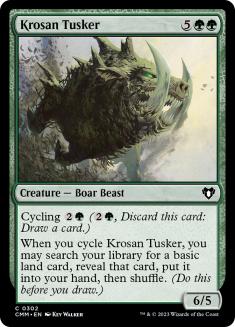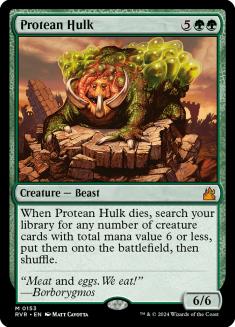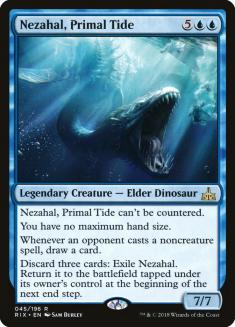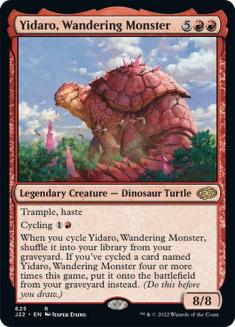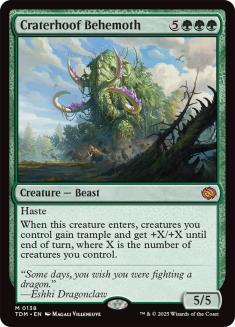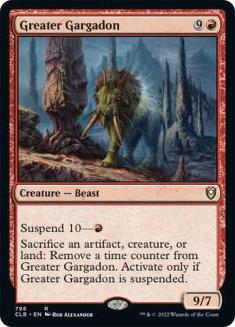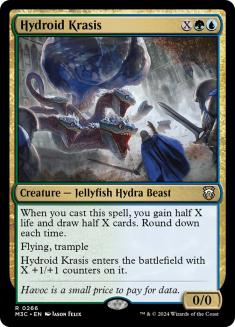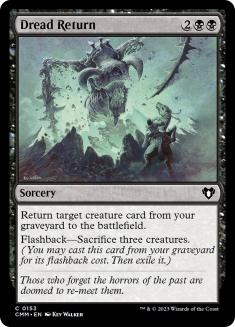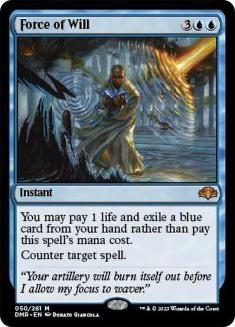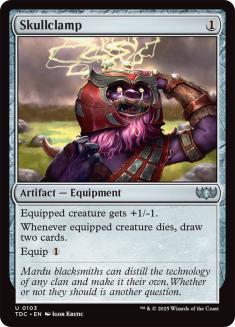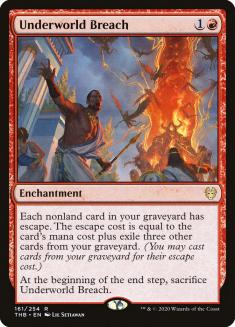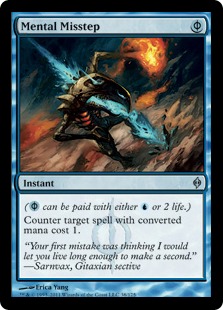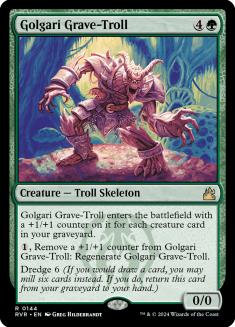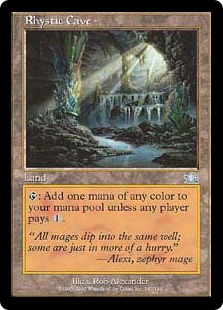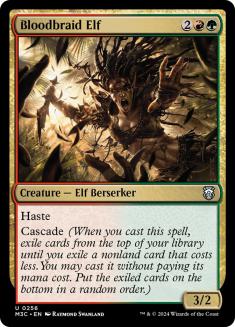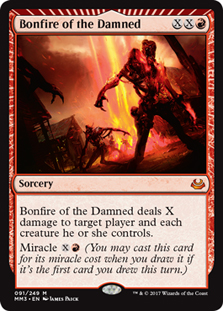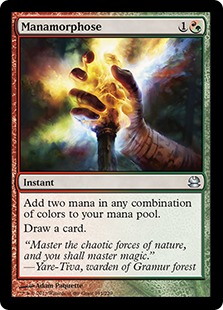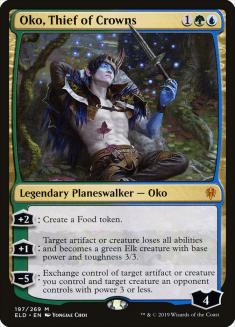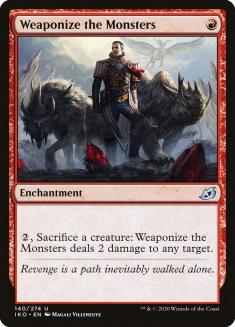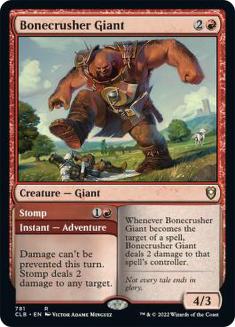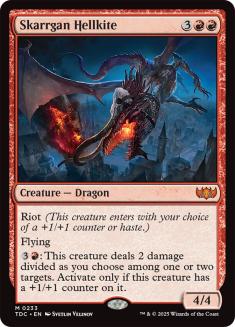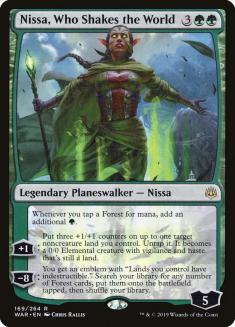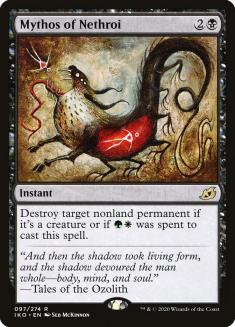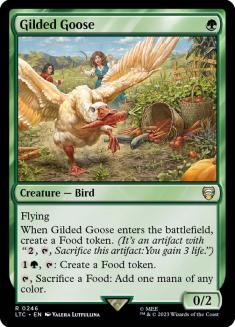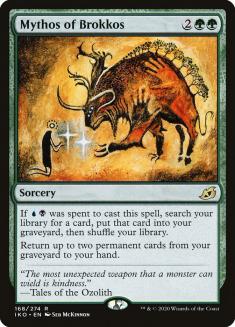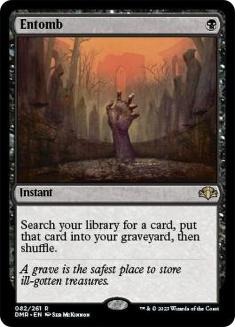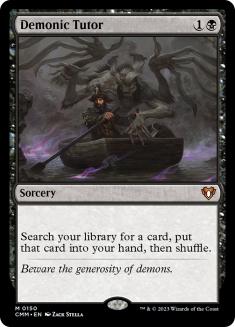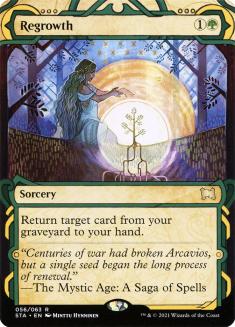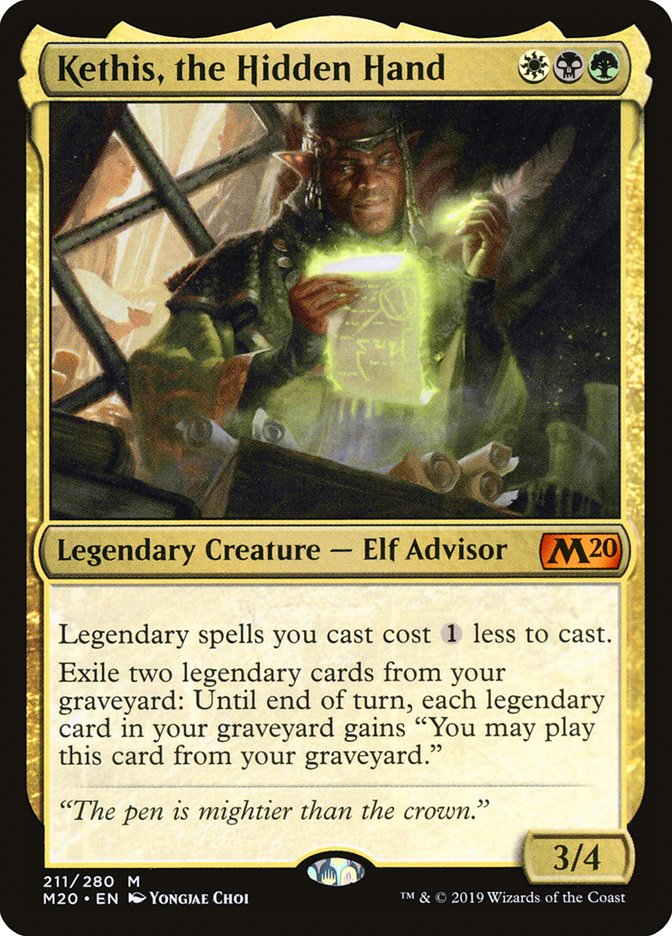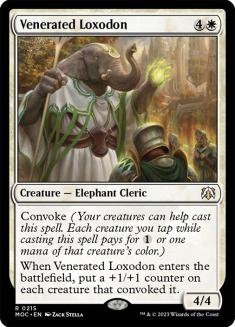That’s odd…
Obosh again…?
Ikoria: Lair of Behemoths is not scared of having too controversial of mechanics, that’s for sure.
While mutate is competitive with banding and planeswalkers for the title of most complicated mechanic ever, companion is one of the more dangerous mechanics ever (which has unsurprisingly generated some pretty intense reactions). Ready for a hot take?
It’ll probably work out okay.
Like, seriously, it’ll be fine.
The critique goes something like this:
Companion is too repetitive because it’s assured that you have access to this card every game. Yes, it might be a deckbuilding restriction to try to make a new deck conform to one of these restrictions, but there are tons of decks that already meet this criterion, and now you’re giving them a free piece of material every game (and it’s the same material every game, over and over). Maybe this is okay in Standard, where they’ll rotate out in a couple of years, but in bigger formats, many of them have very easy conditions and this will be something that is part of the experience indefinitely, since they won’t rotate.
Sound about right? Sure, maybe some people have critiques about the deck validation stuff or how they interact with Commander or whatever, but beyond that previous point, we start getting into specifically tactical issues that most would not consider big enough challenges to stop the show.
As for the previous, let’s look at an example:
All our permanents have to cost two or less? Oh, whatever will we do? You know, those of us who play formats where permanents that cost more than two aren’t exactly what the format revolves around?
Lands (15)
Spells (45)

Here’s an Ad Nauseam Tendrils list from Tuesday’s Legacy Preliminary, and sure enough, all ten of the nonland permanents in the maindeck cost two or less. Put a Lurrus in the sideboard (maybe in place of that Narset…) and not only do you have a 3/2 lifelink backup plan or chump blocker to buy you time, you have two free storm every game. When you’re going off, you just use your Lion’s Eye Diamond mana to cast Lurrus, and then immediately use Lurrus to cast the Lion’s Eye Diamond again.
Here’s another one that’s pretty easy for powered formats:
All my creatures have to be Cats, Elementals, Nightmares, Dinosaurs, or Beasts? Isn’t that a huge condition?
Oh, I see.
Yeah, play a deck with zero creatures and all of them will be Cats, Elementals, Nightmares, Dinosaurs, or Beasts.
Besides, while there’s no shortage of strategies that were already not playing creatures, it’s not like creatures are banned, either…
So, isn’t this proof that the mechanic is broken?
Okay, first of all, are you telling me that powered formats would be ruined by everybody having access to a 3/2 with vigilance for three mana once per game?
And we’re not actually talking about everybody. We’re talking about people with no creatures (or any beyond the whitelist), and we’re talking about people with white or green mana. And then what? You’ve got a 3/2 with vigilance? Okay…?
Maybe that option is worth it most of the time, but are you really telling me that it’s a solved problem and that it’s just clearly worth one of your fifteen sideboard slots?
But okay, let’s suppose it is in whatever case you’re thinking of. What about having to reveal not only that this card is in your sideboard, but also a lot of information about what kinds of cards can or can’t be in your deck?
But okay, let’s suppose you only care about tournaments where decklists are public information. Then what?
Then what? I don’t know, maybe then you’re playing a game? And in this game you get to pick some cards to play with, and these cards do things, and you can play with them or not, and generally speaking, every card you play with takes a spot something else could have taken (or further dilutes your chances of drawing your best cards).
That’s not fair! You switched to the creature with a low-powered ability! What about Lurrus? Lifelink is way better than vigilance, and the graveyard recursion ability is very powerful!
So?
But if people have to put Lurrus in their sideboard, that limits the possibilities! Now, players won’t be able to do stuff like decide to play a Narset, Parter of Veils for spice! And if they have to play Kaheera, they won’t be able to play one Consecrated Sphinx if they want!
Look, nobody’s saying you have to put one of these in your sideboard…
But if I don’t, I’m giving away free value.
No, you’re not. You’re getting whatever you got instead. Maybe you want Narset more? Maybe the Sphinx is worth more to you?
Besides, do you think this is the first time a card limits what other cards you can use? The actual game engine is literally built on this concept. If you want to play a red deck, you can’t play Narset either.
But I could splash Narset if I wanted to.
And you could pass up the Lurrus if you wanted to as well. This game is all about choices. These choices have pros and cons, risks and rewards, and a big part of the game is deciding which choices to give yourself the option to make, and then what choices to make when you’re actually in the moment.
Every time you play Temur Delver, you’re giving up the Dread Return companion you get for completing the deckbuilding quest of playing Dredge.
But what if I don’t want to do what it takes to have Lurrus for a companion?
Then you won’t have Lurrus for a companion? If you don’t complete the quest of having blue mana in your deck, you can’t play Brainstorm, either. You make choices and you live with them. We haven’t even played with the cards yet, and these cards actually look like they’ll be fun (at least for some amount of time). Maybe let’s have that fun first?
But what if Lurrus is strong?
It looks strong!
But if it’s strong, won’t the incentive to play with it limit the range of cards I can play?
Every time they print new cards, there’s a risk that some of them will be good enough to play. And then you can play with them or not? What’s the big deal?
Force of Will got printed almost 25 years ago. Ever since then, it’s been an automatic four-of in the majority of Legacy and Vintage decks (or whatever formats have most closely approximated those).
But Force of Will helps hold the formats together! The game is more fun with it existing.
And that’s the point, isn’t it? If the card is fun, if the game is fun, great! If it’s not fun, boo!
Are you really that sure these cards aren’t fun? That the game isn’t more fun with them existing? You don’t think maybe it’s worth trying out this thing a lot of really smart, passionate creative people spent years and millions of dollars developing?
Do they make mistakes? Definitely.
And some of those mistakes are not that much fun. Yet, most of us are still really glad they’re taking some risks, and let’s just call a spade a spade; they make a lot of really dope stuff. Without question, my curiosity is piqued. I’m excited to check it out, and yeah, I’m gonna try to break it, and maybe this time we’ll “win” and actually break the format, despite their best efforts. It’s far from a given. What I can tell you, just from looking at the previews, this is a really different kind of “bet” from Phyrexian mana or bringing back dredge. Most of these cards look pretty fun and thinking about how to use them has been really fun.
I can easily imagine these things breaking in powered formats. It sure looks like a few of them are at high risk to be broken. So what? What’s the fail state? If Lurrus ends up broken in Legacy, what’s wrong with banning it? Lots of cards are broken in Legacy.
They literally printed Underworld Breach. You think a 3/2 lifelink creature with a relevant text box is the biggest risk they’re willing to take in Legacy?
Anyway, I think people are blowing this out of proportion.
Some mechanics are really bad at a fundamental level, but even in these mechanics, some of the “worst” in history, even these mechanics were some fun. Yeah, a lot of us got tired of them and still had to encounter them, but that’s also speaking to rate and format management.
You want to know what I think is the worst mechanic?
You see, while Phyrexian mana and dredge are extremely problematic mechanics to try to balance effectively, at least they were both interesting. They gave us lots to think about (and continue to do so, for better or for worse).
Rhystic’s whole shtick was your opponent could spend a mana or two to make your card not work. That’s literally the mechanic. We can take turns theoretically doing things that would do nothing and then not doing them, leaving mana up so that our opponent can do anything.
None of the Rhystic cards are even close to as powerful as Mental Misstep or Golgari Grave-Troll, but if they were, I promise you, people would recommend the mechanics differently. When cards are too weak, people say the mechanic is “boring,” even if there is potential for it to be interesting. If the cards are too strong? Hey! It’s the mechanic that is broken! Not the little numbers in the corner! Some mechanics get maligned for power level reasons, despite the mechanic being fundamentally incredibly fun.
An unspeakable number of people have complained about cascade and miracles, and you know why? Because these mechanics were so much fun, an unspeakable number of people wanted to play the game. Not every card is perfectly balanced, and not every mechanic’s fun has the same legs, but when a mechanic is fun up front? That’s a big deal.
There are ten of these companion cards. Do you think any of them are at risk of being banned in Standard? Okay, what about Pioneer and Modern?How many do you think could possibly get banned in either of these formats? Even if several of these turn out to be too ubiquitous, there are very different ways that different cards go wrong.
Is Manamorphose busted? Probably. That doesn’t mean every format it’s in isn’t playable.
When 75% of the room is all playing Oko, it really turns out poorly, since the games aren’t really that fun, everything is the same, and Oko was the chase card of that set.
I am skeptical that Lurrus will ever be played at that level, but even if it is, it’s not like the games beforehand are unplayable. Yeah, maybe it makes Legacy Storm too good, or something. When you’re playing Legacy, new cards come along that are completely busted. Underworld Breach made Legacy Storm too good, too. So what? That’s part of the Legacy experience, and then the card rotates out.
Because that’s how those formats rotate.
But one time there was a game that implemented hero powers wrong and that game wasn’t fun any more.
Ten million people play Hearthstone. I promise you, it is possible to do hero powers well. Besides, this isn’t even at the game engine level. These are just some cards and they might be going on right now, and in the future, some other stuff will be going on.
It’ll be okay.
Here are some Obosh, the Preypiercer decks. This one is a Rakdos sacrifice deck.
Creatures (24)
Lands (20)
Spells (16)

You lose Priest of Forgotten Gods, which is harsh, but maybe we can’t slant more aggressive and really capitalize on just how awesome it is to reliably have access to a five-drop that immediately doubles the damage our stuff does.
Hey, you gotta sacrifice stuff somehow.
One plus four equals five…
Can confirm, the math checks out.
Yeah, I’m a real Heliod-damned genius.
Part of the fun of this mechanic is that it puts a restriction on you and there are tons of ways you can work around this restriction. Bonecrusher Giant counts as a three, yet is an excellent two-mana play, helping get around the restriction Obosh normally puts on us where we’re at risk of wasting mana on several spots of the curve (to say nothing of half the cards being banned).
Creatures (26)
- 4 Torch Courier
- 4 Tin Street Dodger
- 4 Scorch Spitter
- 4 Fervent Champion
- 4 Bonecrusher Giant
- 4 Anax, Hardened in the Forge
- 2 Phoenix of Ash
Lands (4)
Spells (30)

One way to get around Obosh’s restriction is to play a lot of one-drops. If you cast two one-drops on Turn 2, did you even miss out on anything from your curve?
Our appetite for more five-drops is generally going to be lower than average, given our guaranteed access to a good one. Any other five-drop we cast is sort of a “second” five-drop. Some decks are gonna be in for that. Some won’t. That’s part of the game, too.
Like, how good is Obosh in decks with five-drops they actually want to cast?
While we’re on the topic, how good does it need to be?
Creatures (30)
- 2 Thrashing Brontodon
- 4 Gutterbones
- 4 Knight of the Ebon Legion
- 4 Gilded Goose
- 4 Foulmire Knight
- 4 Lovestruck Beast
- 4 Murderous Rider
- 4 Edgewall Innkeeper
Planeswalkers (3)
Lands (18)

Conveniently, most of the Golgari Adventure cards cost one or three. Maybe it looks a little weird, playing more aggressive one-drops instead of card advantage or accelerator two-drops, but I could imagine Obosh serving a valuable role here. All we really have to do is look ourselves in the mirror and say, “Yes, I am choosing to not play Questing Beast, and that’s okay.”
At least we get Mythos of Nethroi now!
Yeah, this card has all the trappings of so many other three-cost removal spells and will surely be overplayed at first. Nevertheless, it is a quality card for Abzan… but how Abzan do you even really need to be? Like, even if you’re missing a color, it’s an easier-to-cast Murder. Maybe it doesn’t take much more than Gilded Goose to make it worth it?
Gilded Goose is a nice one for odds, by the way. There aren’t that many good one-drops in Standard, of course, but it also takes you straight from one to three, just the way your curve likes it.
True. Uro also takes you from an odd number into another odd number, and that is sweet, but we’ve got to be careful. Getting caught up just limiting ourselves to odd costs doesn’t mean we’re building a good Obosh deck. It’s not just about playing a deck that can field enough good odd cards to fill a deck. The impact Obosh has on the game is going to matter a lot more to an aggressive deck than something slower. For instance:
Creatures (24)
- 3 Arboreal Grazer
- 4 Cavalier of Thorns
- 4 Gilded Goose
- 4 Beanstalk Giant
- 2 Murderous Rider
- 3 Brazen Borrower
- 4 Uro, Titan of Nature's Wrath
Planeswalkers (4)
Lands (23)

Like, what are we even doing here?
We’ve already got plenty of excellent things to do for five or more mana, and how often are we even going to have creatures on the battlefield ready to attack for damage? And in those spots, how often does Obosh make the difference? If it were free, yeah, of course we’d play it. It’ll have spots. But it’s not free. And part of the game is evaluating the opportunity cost.
For instance, if we play Obosh, we won’t be able to play Mythos of Brokkos.
Getting back two permanents is already enough to at least get me to look up; but when we get an Entomb on top of it (or rather, to start things off)?
Now we’re talking about a Demonic Tutor + Regrowth combo!
Yeah, terms and conditions apply, but Mythos of Brokkos is a really exciting card.
Yeah, you can always go get more of this, we get it. Hopefully that’s not the whole story. It’s gotta at least be interesting to consider playing decks with one Polukranos, Unchained and one Brokkos, Apex of Forever. They’re both definitely going to have their spots.
Creatures (15)
- 4 Hydroid Krasis
- 4 Cavalier of Thorns
- 1 Murderous Rider
- 1 Polukranos, Unchained
- 4 Uro, Titan of Nature's Wrath
- 1 Brokkos, Apex of Forever
Planeswalkers (3)
Lands (23)
Spells (19)

We can even play a little bit of a toolbox of one-of creatures if we want, since the Mythos gives us such increased access to them at the right times.
As far as slower ways to use Obosh go, I gotta admit, I’m kind of intrigued about the possibility of combining it with Yidaro, Wandering Monster.
While Yidaro technically has an odd cost, we’re frequently going to be spending two mana at a time on it (which can already be convenient for using our mana efficiently). The turn we finally get to cycle Yidaro for the fourth time, we’ll have only spent two mana and could easily still have five mana available to cast Obosh and immediately attack for sixteen points of trample and haste.
What does that deck look like? No idea.
So instead, I’ll leave you with Kethis, the Hidden Hand:
Creatures (23)
- 1 Massacre Girl
- 1 Arboreal Grazer
- 4 Golos, Tireless Pilgrim
- 4 Kethis, the Hidden Hand
- 3 Cavalier of Thorns
- 4 Gilded Goose
- 2 Beanstalk Giant
- 1 Kenrith, the Returned King
- 2 Uro, Titan of Nature's Wrath
- 1 Nethroi, Apex of Death
Planeswalkers (5)
Lands (22)
Spells (10)
Sideboard

Kethis immediately accelerates you into Obosh a turn ahead of schedule, and you have access to Obosh assured. This basically upgrades Kethis, making it so just part of what Kethis brings to the table is the ability to cast Obosh next turn. This also conveniently skips a turn of mana inefficiency, since you’re getting to use all four mana on Turn 4.
Kethis’s graveyard recursion ability is also pretty incredible in this list, but even if we cut blue and dropped most of the legends, just having the ability to consistently cast Obosh on Turn 4 is pretty interesting. For instance:
Creatures (31)
- 2 Thrashing Brontodon
- 4 Venerated Loxodon
- 4 Pelt Collector
- 4 Gutterbones
- 4 Rotting Regisaur
- 4 Knight of the Ebon Legion
- 4 Kethis, the Hidden Hand
- 4 Gilded Goose
- 1 Murderous Rider
Planeswalkers (3)
Lands (19)

Do you even understand how tight of a “five”-drop Venerated Loxodon is for an odd deck?
It’s all about cheating the system, baby.
Look, I’m not saying none of these cards are ever gonna get broken in any formats. What I do know is that it’s been a blast this past week building all kinds of new decks, and if one or more of these cards can be broken, well then, I’m on the case.

